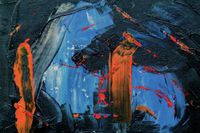Sargent and Fashion review – tragicomic travesty is a frock horror
An exhibition at Tate Britain claims that John Singer Sargent was primarily a painter of fashion, but this article argues that his art is much more than that.

A Stuffed Shirt Exhibition
The exhibition at Tate Britain claims that John Singer Sargent, the American painter, was mainly a painter of fashion. However, the author of this article disagrees, stating that Sargent's art is about much more than just fashion. Sargent was fascinated by the nature of social being and he painted people as players in a social world, which was modern and truthful.
The author argues that the exhibition turns Sargent into a stuffed shirt, focusing on the clothes rather than the faces and souls of his subjects. Sargent's paintings are not about the dresses and hats, but about the people and their identities. The exhibition fails to capture the essence of his art.
Wretched Display
According to the author, the exhibition wretchedly displays Sargent's works. The paintings are obstructed by clothes in glass cases, which distract from the art instead of illuminating it. The author gives an example of a portrait of Lord Ribblesdale, which is displayed alongside a top hat. The author finds this display unnecessary and believes it takes away from the fascinating portrait.
The author argues that the meticulous sartorial scholarship is misplaced. Sargent's paintings are fictions, not jumbles of facts. The focus should be on the way Sargent paints, not on the clothing his sitters wore. The author believes that the exhibition sacrifices the narrative logic of Sargent's life as an artist to its essayistic theme.
Tragicomic Presentation
The author finds the presentation of the exhibition to be tragicomic. Sargent's finest works have been lent, but they are not given the attention or grandstand they deserve. The author mentions the portrait of Madame X, which is shown under a forgettable quotation painted in huge letters. The author argues that the exhibition fails to provide a build-up or history of Sargent's career and misses the opportunity to explore the Paris in which he started his career.
The author concludes by stating that the exhibition's narrow clothes-based interpretation hinders the appreciation of Sargent's art. Rather than focusing on the dresses and hats, the author believes that Sargent's art should be appreciated for its richness and complexity. The exhibition's chaotic non-narrative display doesn't do justice to Sargent's talent.



